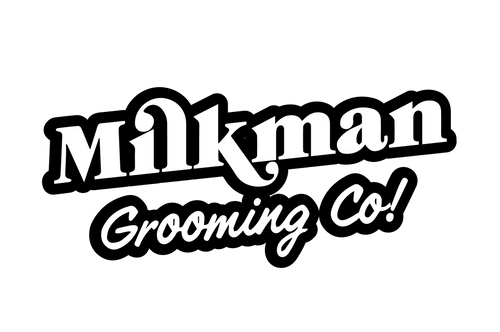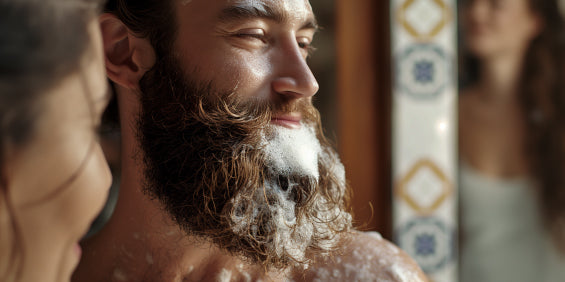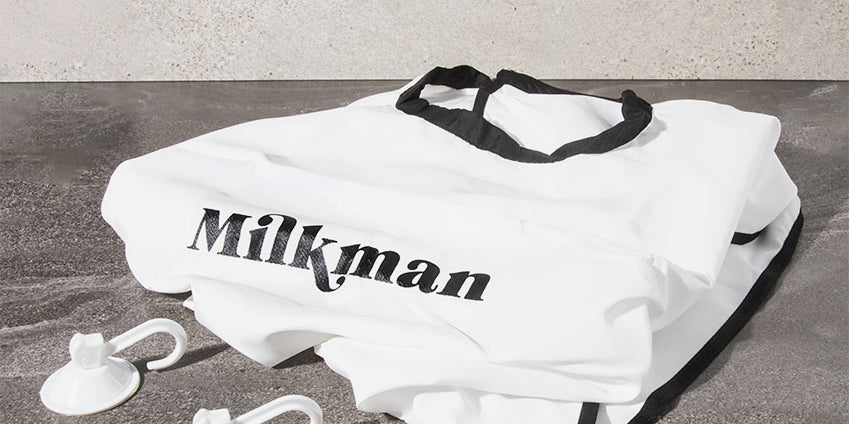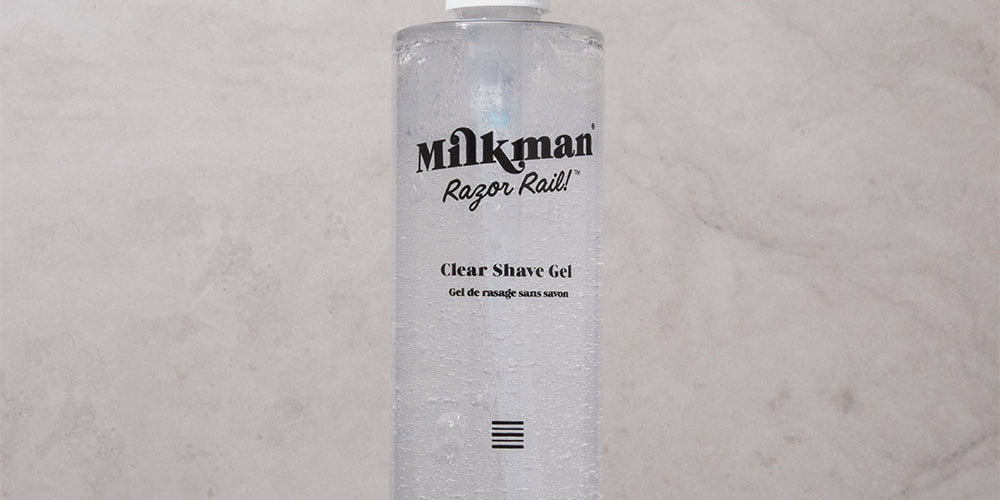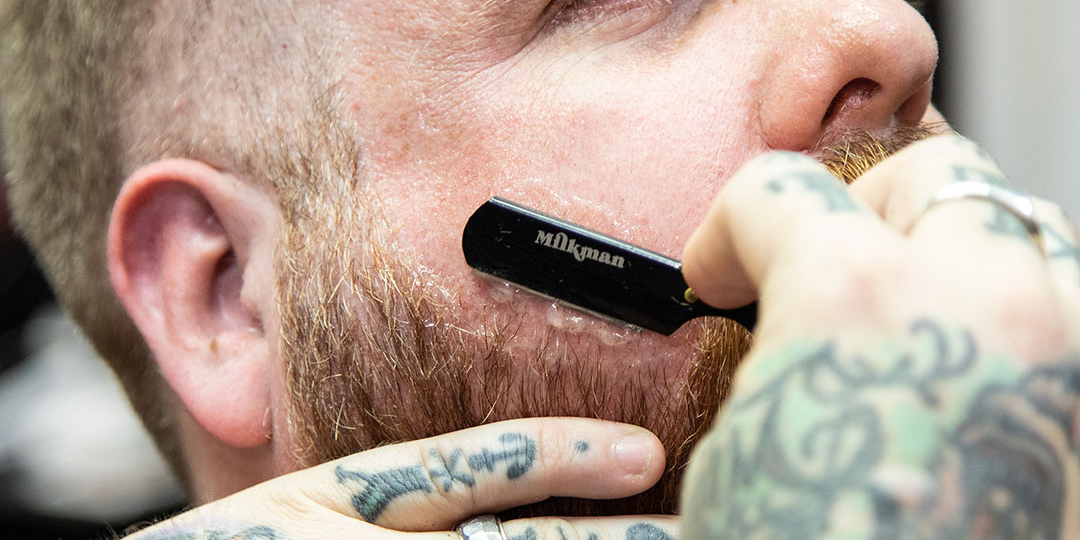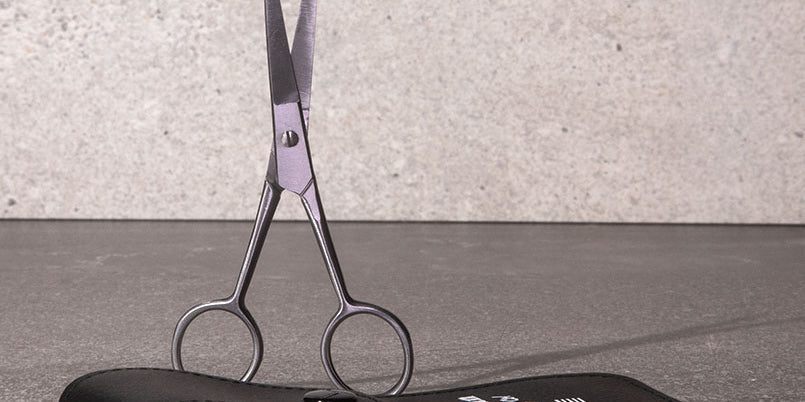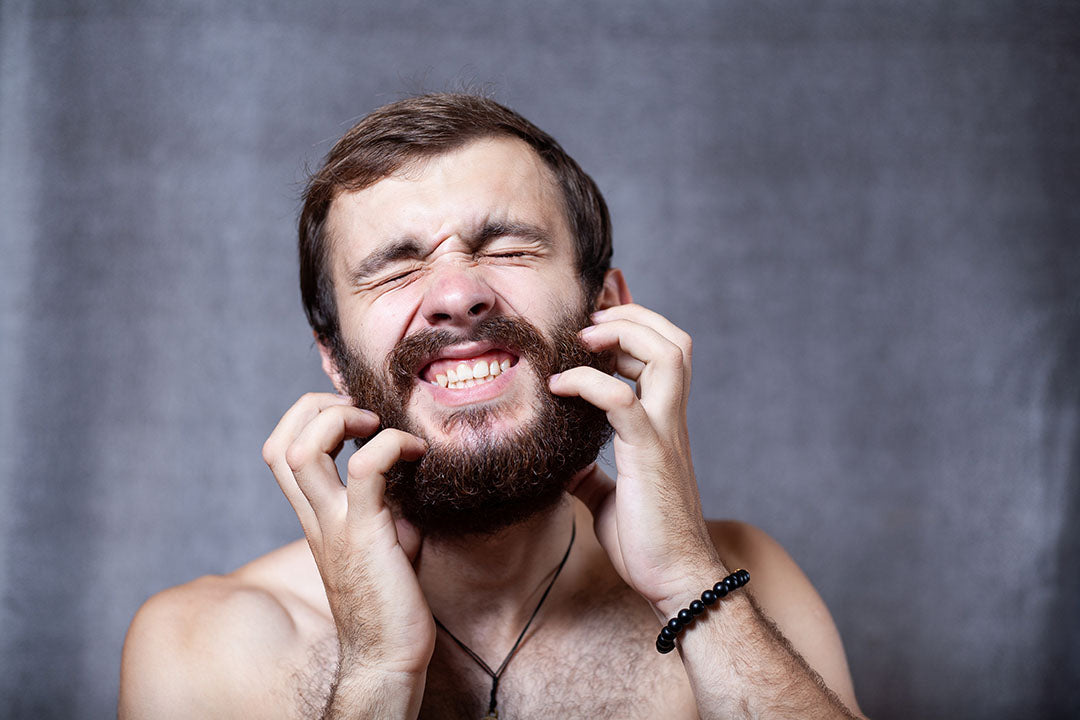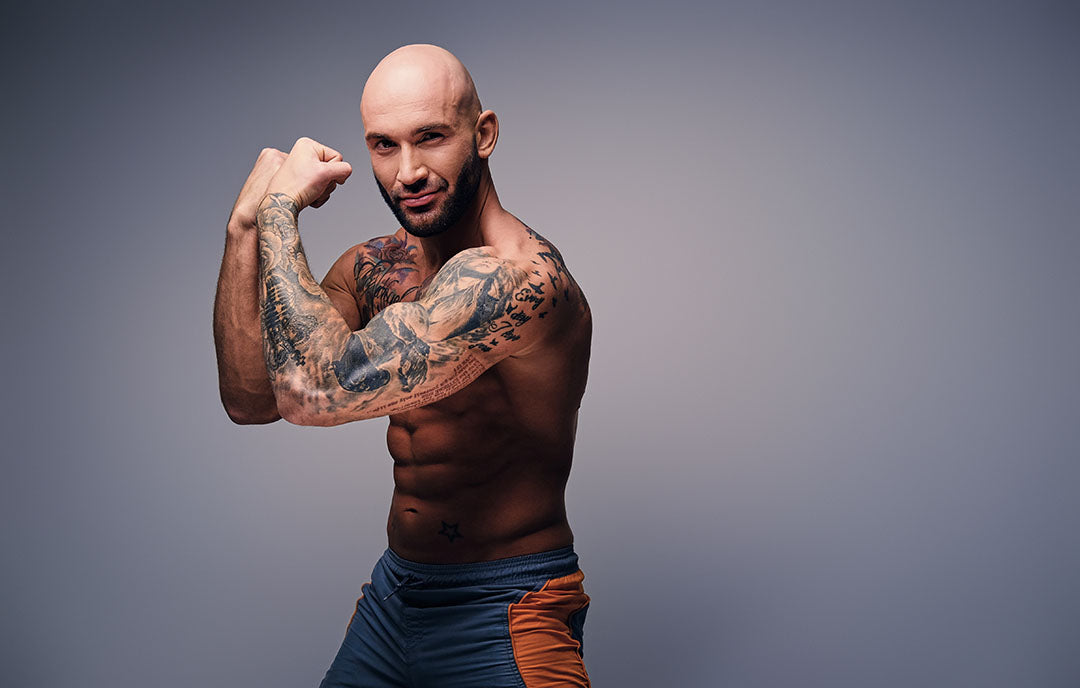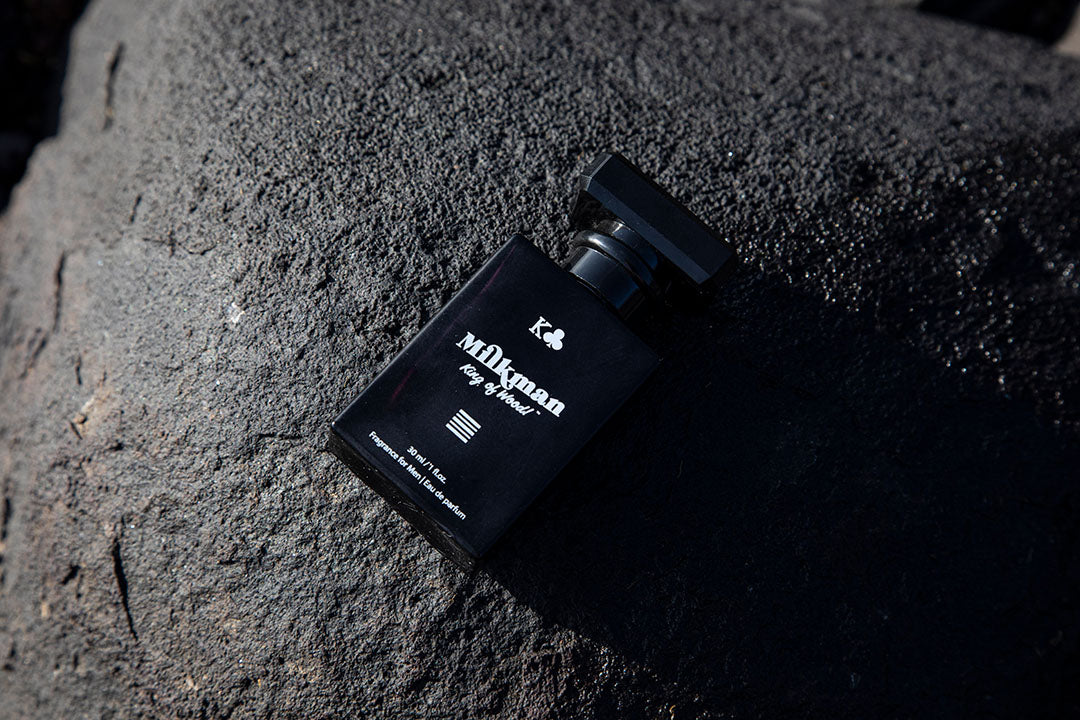The dreaded beard itch is the bane of many a beardsman and one of the leading causes of "beard drop out" (where efforts to grow a beard are aborted after a few weeks of growing it out). During the course of my own struggles with beard itch I found a few really good blog posts and Youtube videos on the topic but almost all them were focused on the remedies for beard itch and did not deal with the underlying causes.
Others were great at explaining some aspects of what might cause beard itch but then went on to suggest ways of dealing with those causes without explaining how and why they may help.
Beard itch is a topic that I get asked about all the time so I thought it would be a good idea to write a comprehensive article to once and for all outline the fundamentals of beard itch and how to deal with it. After all, every man deserves a chance to have a go at growing one of the most enduring symbols of manliness without the whole experience getting under his skin.
What causes beard itch?
The first thing to note is that there are essentially 2 main types of beard itch that can affect men in different situations. The first is what I like to call the "virgin beard itch". This typically occurs in the first few weeks (sometimes months) of first growing out a beard from a clean shaven state. The second type is called "veteran beard itch" which tends to affect bushier, more mature beards. Given that the factors likely to play a role in each of these beard itch types are different, the strategies to manage them must be tailored accordingly. Let's look at the causes of each one in turn, before looking at ways to deal reduce the itchiness.
Fresh beard hair follicles are mainly responsible for virgin beard itch and there are a couple of things going on. Because the tips of these hairs were only recently cut by a razor or electric shaver they are sharp and often chisel-shaped because the hairs grow, and are therefore shaved, at an angle. See figure 1 for an illustration of this. These little chisels are also quite stiff and wiry because the hair fibres are newly formed and are yet to have been softened by the elements and a good beard care routine.
So basically in the first few weeks of growing a beard, there are whole bunch of chisel-shaped wires pointed at an angle towards your skin, scraping it as your face moves around during the course of a day. This is a recipe for itchiness. To make things worse, for most men there will also be a small number of follicles that aren't used to growing outward and end up curling back into themselves, creating in-grown hairs. These blighters can cause irritation, skin blemishes and more itchiness. Unlike virgin beard itch, veteran beard itch has more to do with the skin under the beard, rather than the beard hair itself.
One of the main causes of veteran beard itch is dry skin. If you have dry flakes of skin in your beard then you've got "beard ruff" which is usually a pretty good sign that the skin underneath your beard is not moist enough to form a healthy barrier to the elements which will make it prone to itching. Like a dry scalp, there could be many different causes of dry beard skin. Most commonly they include hot or cold weather, low humidity, long term use of air conditioners or central heating, using harsh cleansers or cleansing too regularly (thereby stripping the skin's natural protective oils), and using products that contain ingredients that you are sensitive to.
Medical conditions like allergy, eczema and psoriasis may also be responsible. Another common cause of veteran beard itch is not cleansing the skin under the beard properly, resulting in an accumulation of sebum, dead skin, bacteria, dust and grime that can coat the facial skin and cause irritation. This type of beard itch may be particularly noticeable in hot weather. If you've ever been unlucky enough to be stranded without a shower for a long period of time you may have noticed how itchy dirty skin can get. Even if you do give your beard a wash every day, it's possible that you aren't using a good enough cleanser, or you aren't scrubbing enough to remove the build up.
How to Deal with Beard Itch
1. Brushing
For virgin beard itch, the main objective is to keep those chisel shaped little beard hairs from irritating the skin. There are several ways to do this and ideally it is better to use several methods in combination for best results.
First, a twice-daily brush with a beard comb or beard brush is a great way to slowly start to dull the sharp tips of the hair. I recommend brushing upwards against the grain with several firm strokes, so that the brush or comb rubs against the tips of the hair, before finishing with a few strokes with the grain to set the hair back in place.
This will not get results over night, but with time it should contribute to a dulling of those little chisel tips and make the beard hair less irritating. Regular brushing against the grain should also help the beard hair to grow out from the face (instead of down along it) which may help to reduce rubbing of the beard hair tips against the skin.
2. Beard Oil

Next, a good quality beard oil is something that many beardsmen swear by. An oil with the right ingredients will lubricate, absorb into the hair to soften it and help to moisturise the skin. Be aware that, like a good wine, some beard oils are better balanced than others.
Look for brands that include things like coconut oil, grape seed oil, jojoba, argan (Moroccan) oil and hemp seed oil. If the beard oil feels too greasy, try using less or switching to a brand that has the right mix of oils for the skin to which it is being applied.
3. Cleansing the Beard
A cleansing routine is also a real must. In the early stages it is important to exfoliate to avoid in-grown hairs as the beard emerges from your face. I recommend a gentle cleanser that has sufficient lather to remove build up of oil and dead skin, but not too much that it dries out the face. A cleanser that has a foaming action is an excellent choice as it allows the beardsman to measure a consistent amount. Also, because it comes out pre-lathered, it is less likely that too much will be used for the job at hand.
Once the beard is a few millimetres long, there may be a benefit from the additional use of a conditioner. However, conditioners are generally designed for scalp hair, rather than thick beard hair, and it may feel weird and inconvenient to have to put conditioner on the face. One way around this would be to find a 2 in 1 beard cleanser that cleans and conditions at the same time.
Troubleshooting the Causes of Beard Itch
For veteran beard itch, the regular beard care tips still apply and daily brushing will do wonders. However the focus should be to determine what is causing the itch. If it is dry skin, then a good beard oil or beard balm will help to moisturise the skin and hair. When applying the oil or balm, it is a good idea to draw it upward from the bottom of the beard, against the grain.
Brush it up against the grain several times before patting it back down. This technique will help to coat the skin under the beard to moisturise it. However, if the dry skin persists may be a good idea to discuss it with a doctor, particularly if it gets worse over time or is associated with redness or discharge. They will be able to help you to figure out if you have a skin condition that requires treatment, or whether it is something more benign.
If your veteran beard is itchy but you aren't having trouble with dry skin, it may be due to your cleaning routine. Try giving the beard a good scrub initially with a flannel or a gentle exfoliating pad and then work out a routine to ensure consistent cleaning of the skin to avoid build up. The key is to develop a beard care routine that works for you and stick to it religiously. If you find that your cleanser isn't working well for you, try a different brand.
There may be an ingredient in the formulation that irritates your skin. As part of any good veteran beard care routine, it is also a good idea to trim the beard in shape once in a while. Facial hairs have a propensity to grow in all angles and directions causing it to rub against the skin. Trimming the facial hair with a good pair of beard scissors will help it grow evenly and avert stray hairs from poking and irritating the skin. A beard balm with a low to medium hold will also help to train the hairs to grow in the right direction.
Having a beard is a real joy and not having to shave every day is absolute gold. However, that doesn't mean that beards require no work at all. If you take these beard care tips on board you'll be in good shape to avoid the dreaded itch and your beard will look sharp and distinguished. If you've got any tips of your own, why not let us know about them in the comments section below?
Health Disclaimer
This information is not intended to diagnose, treat, cure, or prevent any disease. Results may vary.
This information does not constitute medical advice and it should not be relied upon as such. Consult with your doctor before modifying your regular medical regime.
 |
Dr Benjamin De Campo Ben studied Pharmacology & Toxicology at the University of Western Australia where he was awarded a Bachelor of Science (with 1st Class Honours) & a PhD. He went on to complete a law degree & spent almost 10 years advising in the fields of medicine, pharmaceuticals, cosmetics & nutrition before starting his own cosmetics company Milkman Grooming Co & white labelling for other personal care brands. |

